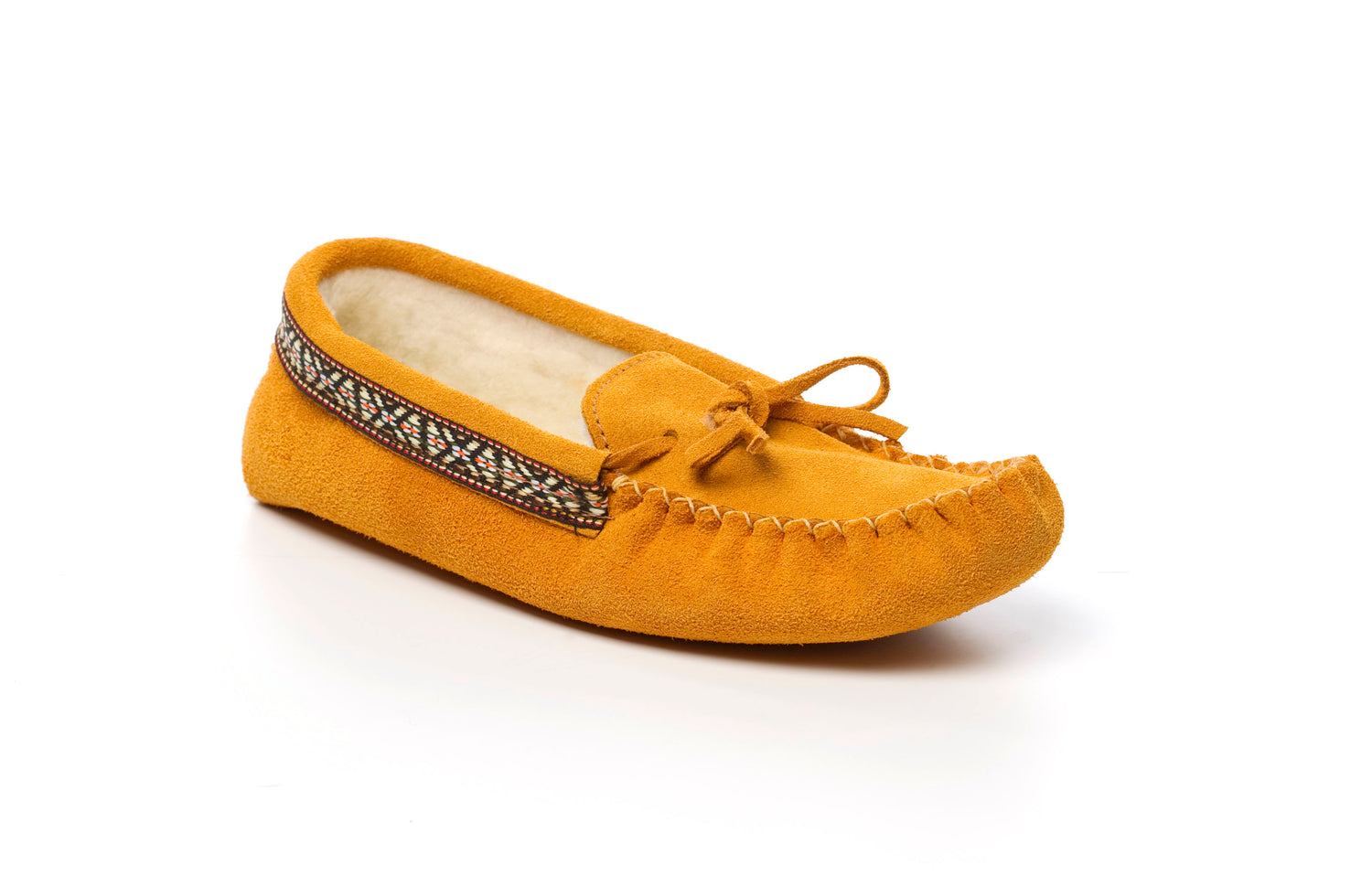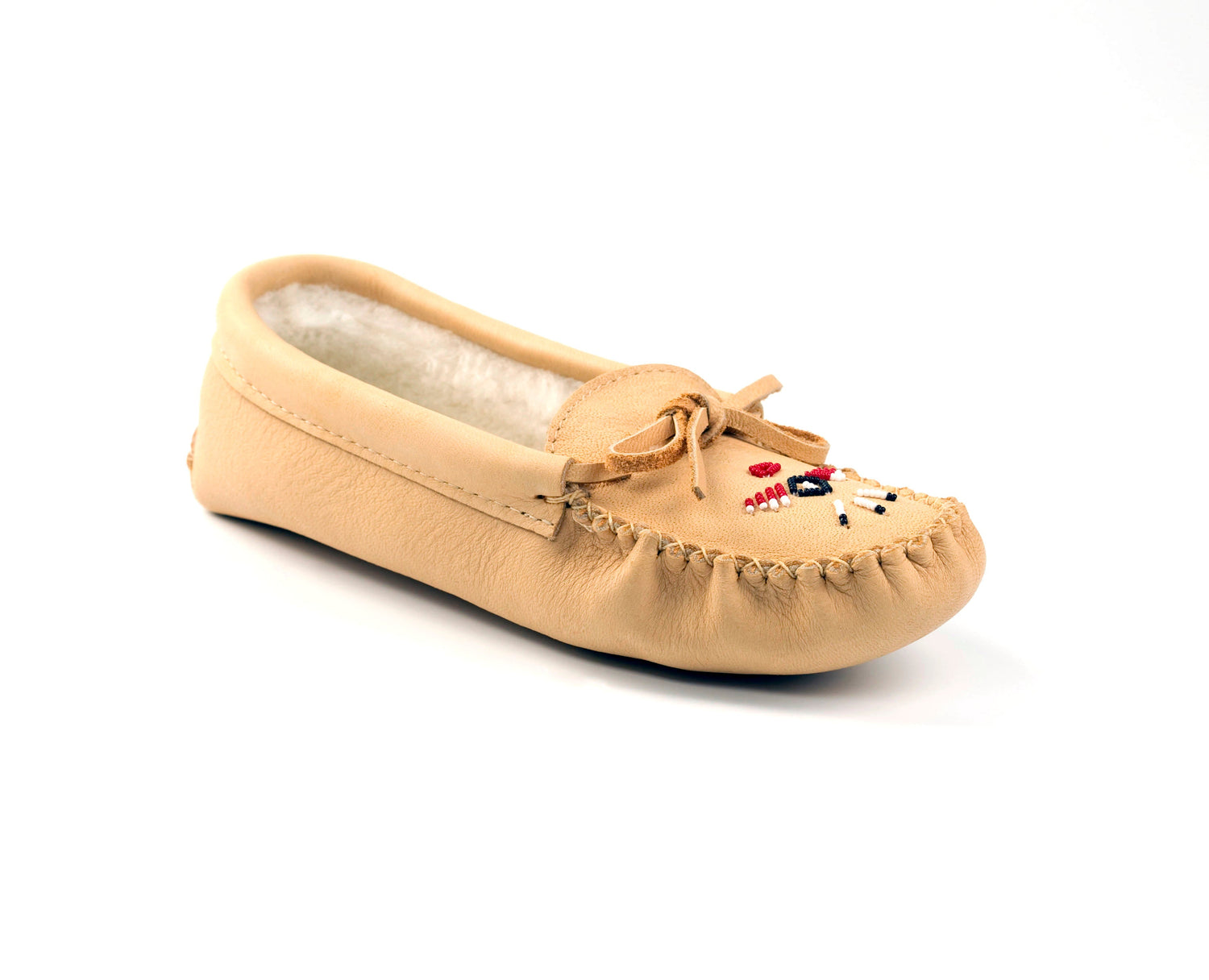
Moccasins: A Sustainable Step Forward in Footwear
Share
Moccasins: A Sustainable Step Forward in Footwear
In an age of fast fashion and disposable goods, consumers are increasingly seeking products that align with their values. This shift has brought a renewed appreciation for timeless, handcrafted items with a story—and few products fit this description as perfectly as the moccasin. More than just a comfortable shoe, the authentic moccasin, with its roots in Indigenous Canadian craftsmanship, represents a powerful step towards sustainable and ethical consumption. From its minimal environmental footprint to its cultural significance, the moccasin stands in stark contrast to the synthetic slippers and mass-produced footwear that dominate the market, offering a superior alternative for both your feet and the planet.
The Environmental Footprint: Natural vs. Synthetic
The most significant environmental advantage of traditional moccasins lies in the materials themselves. Unlike the plastic, petroleum-based foams, and synthetic rubbers found in most commercial slippers, authentic moccasins are made from natural, biodegradable materials.
- Natural Materials & Biodegradability: Genuine moccasins are crafted from materials like moose hide, suede, and genuine rabbit or sheepskin fur. These materials are part of a natural cycle. Sourced responsibly, they biodegrade over time, returning to the earth without leaving behind microplastics or toxic chemicals. In contrast, a typical pair of synthetic slippers, often made of polyester, polyurethane, and vulcanized rubber, will sit in a landfill for hundreds of years, slowly breaking down into harmful microplastics that pollute our ecosystems.
- Low-Impact Production: The production of handcrafted moccasins is a fundamentally low-impact process. It relies on the skill and time of individual artisans, using hand tools and traditional techniques. This process consumes far less energy and generates minimal waste compared to the large-scale, automated factories that churn out millions of pairs of synthetic slippers. The entire supply chain—from sourcing the hide to the final stitch—is often smaller and more transparent, reducing the carbon footprint associated with global manufacturing and shipping.
- Longevity and Durability: Quality handcrafted moccasins are built to last. The strength of natural suede and leather, combined with the meticulous attention to detail from a skilled artisan, results in a product that can withstand years of use. This longevity directly combats the "throwaway culture" of synthetic footwear. When you invest in a pair of authentic moccasins, you are choosing a product that will not need to be replaced after a single season, reducing consumption and waste in the long run.
From Local Canadian Craft to Global Renown
The journey of the moccasin from a functional piece of Indigenous Canadian footwear to a globally recognized symbol of comfort and style is a testament to its enduring appeal and inherent quality. Originally a practical necessity for survival and travel, moccasins were designed to be both lightweight and durable, perfectly adapted to the varied terrain of the Canadian landscape. They were a part of a rich cultural tapestry, with each Indigenous community developing its own unique patterns, beadwork, and construction techniques.
This deep-rooted authenticity is what first captivated a wider audience. As travelers and traders encountered these unique shoes, they were drawn to their comfort, craftsmanship, and the rich cultural story behind them. Over time, the moccasin began to evolve, with new styles emerging for different purposes, such as loafers, slippers, and driving shoes, all while retaining the core elements of soft, supple materials and a flexible fit.
The rise of the internet and a global marketplace has accelerated this journey. Today, brands like Sheepskin and Things play a vital role in sharing this heritage with the world. By connecting consumers directly with Indigenous-made products, these brands not only offer a superior shoe but also a chance to support traditional artisans and their communities. The global fascination with a product that is authentic, handcrafted, and ethically made is a powerful driver of the moccasin’s current success, turning a local piece of footwear into a statement of global consciousness.
Beyond Footwear: A Choice for Mindful Living
Choosing a pair of moccasins over their synthetic counterparts is a decision that extends far beyond personal comfort. It is a choice to support sustainable practices, celebrate cultural heritage, and invest in a product made with integrity. The feeling of slipping into a pair of soft, natural-material moccasins is not just a physical sensation; it’s a connection to a tradition of mindful living and an appreciation for the earth’s natural gifts.
In a world filled with impersonal, mass-produced goods, the moccasin stands as a reminder of the value of human touch, the beauty of natural materials, and the importance of making choices that are good for us, for our communities, and for the environment we all share.



